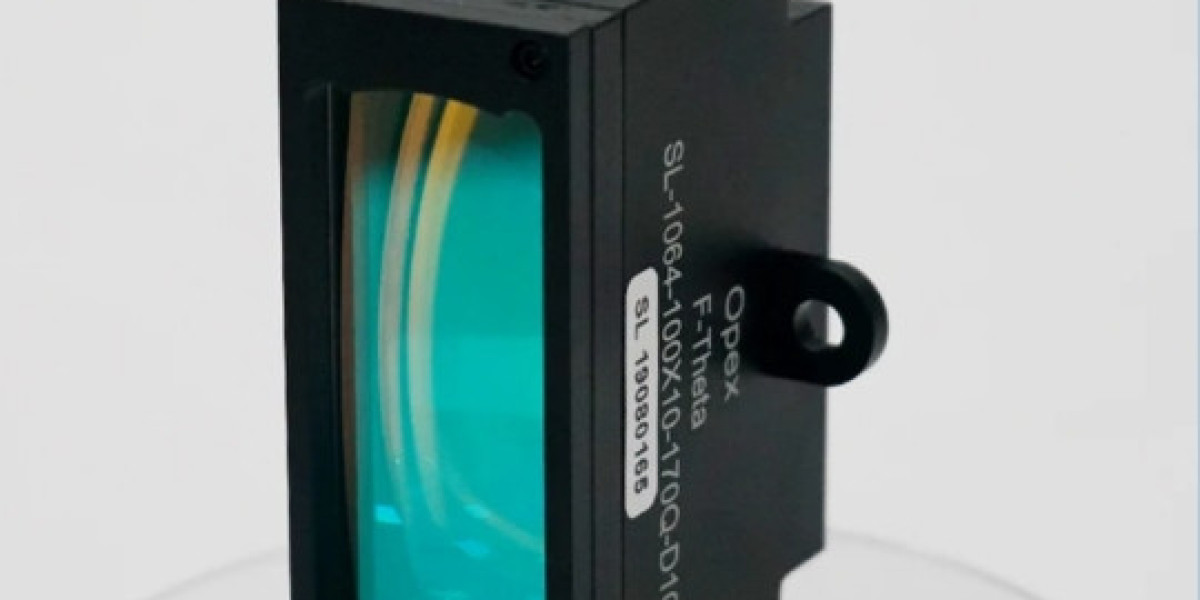Though it may appear like a simple optical glass component, the laser lens plays a central role in focusing the beam, maintaining consistency, and ensuring that the energy output aligns perfectly with the intended target. And when this lens suffers even the tiniest scratch, the consequences can be significant.
Let’s explore why that happens and how it connects directly to performance in real-world industrial processes.
What is a Laser Lens and Why Is It Crucial?
A laser lens is designed to focus or manipulate the beam of a laser system. Unlike traditional lenses, it deals with extremely high-energy beams that can cut through metal, stone, or ceramics. The lens doesn't just "magnify" or "reduce"—it concentrates energy into a precise focal point.
This concentrated energy is what allows a laser machine to perform precision tasks. Any deviation in the shape, cleanliness, or clarity of the laser lens directly impacts the beam’s focus. If the beam doesn’t converge correctly, it can scatter, weaken, or heat up unintended areas. This is especially problematic in high-speed manufacturing environments, where quality consistency is essential.
The Impact of a Minor Scratch on a Laser Lens
Now, let’s get to the core question: Why does even a minor scratch on a laser lens disrupt performance?
It all comes down to how light interacts with surfaces.
A scratch, even one that isn’t visible to the naked eye, acts as a refractive anomaly. When the beam hits that scratch, the energy distribution shifts. Some of the laser light reflects off the scratch’s edges. Some diffracts. Some gets absorbed, heating up that localized area.
Here’s what that leads to in practical terms:
Distorted Focus: A scratch alters the beam’s convergence point, reducing cutting depth or accuracy.
Energy Loss: Part of the beam is misdirected, weakening its cutting or marking ability.
Lens Heating: Energy trapped around the scratch can cause microthermal hotspots, damaging coatings or accelerating further wear.
Material Waste: Imprecise beams lead to errors in the product, causing wasted material or rework.
In a factory where tight tolerances are non-negotiable, this sort of degradation is unacceptable.
Real-World Implications of Damaged Laser Lenses
Consider a manufacturing line where a fiber laser is used to cut 2mm aluminum sheets at 800mm/min. A perfect lens ensures each cut is uniform. Now, introduce a small lens defect.
Within minutes, the beam becomes slightly off-center. Instead of clean edges, the cut lines show minor burrs. By the time the deviation is caught during inspection, several sheets are already compromised. Production slows. Quality control steps in. The issue is traced back to the laser lens.
The takeaway is simple: a minor optical defect in a high-precision environment becomes a costly interruption.
Maintenance Habits That Prolong Laser Lens Lifespan
Since laser lenses are vulnerable to contamination, scratches, and wear, preventive maintenance is non-negotiable. Operators must implement consistent cleaning protocols and inspection routines. Here’s how that typically plays out:
Daily Inspection: Before and after shifts, visually inspect the laser lens using magnification. Look for smudges, burns, or scratches.
Contact-Free Cleaning: Always use non-abrasive materials. Use lens cleaning fluid, microfiber cloths, or air blowers to remove debris.
Use of Lens Cassettes: In high-power systems, automatic cassette mechanisms can switch lenses to maintain consistency without manual handling.
Humidity and Dust Control: Keep the operating environment clean to prevent airborne particles from settling on the lens.
Proper Handling: Never touch a laser lens with bare hands. Finger oils can burn onto the surface under laser heat.
These steps might sound routine, but they prevent performance dips, costly downtime, and damage that can spiral into larger system failures.
Selecting the Right Laser Lens for Specific Applications
Different tasks require different focal lengths and coatings. For example:
CO₂ Lasers: Typically use zinc selenide lenses with anti-reflective coatings.
Fiber Lasers: Often use fused silica lenses that can handle shorter wavelengths.
When choosing a laser lens, considerations include:
Wavelength Compatibility: Every laser emits a specific wavelength. The lens must match it to transmit the beam efficiently.
Focal Length: Short focal lengths offer fine detail but a smaller working distance. Long focal lengths work better for deeper cuts or thicker materials.
Lens Shape: Plano-convex or meniscus designs change how the beam focuses.
Thermal Resistance: High-power lasers generate heat. Lenses must endure thermal stress without distortion.
These technical specs must align with the system design and end application. Using the wrong lens can lead to underperformance—even if the system itself is technically sound.
When to Replace a Laser Lens
Even with perfect care, laser lenses don’t last forever. Factors like high heat, environmental dust, and repeated use degrade performance over time.
Here are clear signs that a laser lens needs replacement:
Sudden Drop in Cutting Efficiency: If the material isn’t cutting cleanly even after cleaning, the lens may be worn or damaged.
Visible Burns or Pitting: These are irreversible defects.
Consistent Spot Size Variation: Indicates changes in focus due to lens distortion.
Unusual Spark Patterns: Suggest beam scatter caused by lens surface defects.
It’s critical to replace the lens before it begins to affect production quality. Waiting too long invites larger complications and higher costs.
Integrating Laser Lens Monitoring into Industrial Workflow
Modern systems are becoming smarter. With sensor integration and monitoring software, laser lens performance can now be tracked in real time.
Thermal Sensors monitor temperature changes that suggest lens contamination.
Beam Profilers detect focus inconsistencies caused by lens wear.
Usage Logs help predict lens replacement intervals based on workload.
This proactive approach minimizes unplanned downtime and improves operational efficiency. It also shifts maintenance from reactive to predictive—keeping productivity high.
Final Thoughts
The laser lens may be small in size, but its role in laser-based manufacturing is monumental. One scratch, one speck of dust, or one neglected inspection can spiral into production errors, wasted materials, and system downtime. Understanding the optical precision and vulnerabilities of this component helps teams stay ahead of problems. From careful handling and cleaning to timely replacement and smart monitoring, every effort made to maintain the laser lens contributes directly to quality, efficiency, and operational stability.
No advanced laser system can perform at its best if its lens is neglected. Respect the lens, and the entire process benefits.







